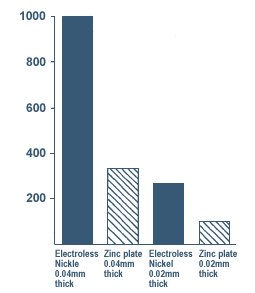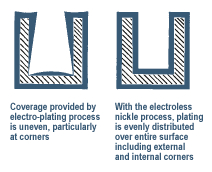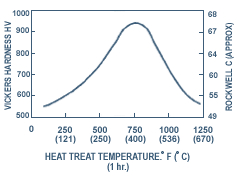Electroless Nickel
Electroless Nickel plating is a non-electrolytic, auto-catalytic, immersion chemical plating method of depositing a Nickel Phosphorous alloy for engineering applications, deposits from 5 to 75 micron thickness can be applied to most metallic substrate materials, for a wide range of applications.
Electroless Nickel is classed as a “COLD” process, with application process temperatures in the order of 85 – 95°C, ensuring no detrimental effects to the physical and mechanical properties of the base materials. Electroless Nickel for engineering applications is covered by ASTM B656-86 and B733-86.
Localised deposits can be produced by masking areas that do not require plating.
Electroless Nickel Plating (AMS 2404E)
Maximum Thickness: 75 um Maximum Plating Rate: 12.5um/hr
Maximum Length – 3600mm Maximum Diameter or Width – 850mm
Maximum Weight – 5 tonne Floor to Hook Height 3T crane: 5.20m
Maximum Length on Flight Bar A10 and A11: 1600mm
Highlights
High Hardness
Excellent Corrosion Resistance
1,000 Hours Salt Spray Test
5-75 Microns Thickness
Good Wear Resistance
Low Friction
For Ferrous and Non-Ferrous Metals
Uniform Coating Thickness
Up To 67 HRc Hardness
“Cold” Process
Corrosion Resistance
High Hardness
Low Coefficient of Friction
Typical Applications for Electroless Nickel
Hydraulic and Pneumatic Components
Rods, Pistons, Cylinders
Pumping Equipment
Housings, Rotors, Impellors,Valves, Fittings, Shafts
Valve Components
Balls, Gates & Discs, Plugs,Butterflies and Shafts
Mechanical Components Oil and Gas Equipment
Packers, Rods, Fire Tubes and Barrels
Plastic Moulds, Dies, Screws and Fittings Food Equipment
Gang Knives, Slicing Blades, Bowls, Mixing Blades, Presses, Timing Screws, Hooks, Conveyor Chain
Automotive Components
Diff Pins, Rocker Arms, Steering Unit Comp., Shocker Rods, Brake Pistons, Fuel Injection Comp., Trans. Thrust Washers
Chemical Equipment
Heat Exchangers, Filter Units, Mixing Equipment, Tubing
Scientific Equipment Medical Components Foundry Patterns, Paper and Pulp, Textile
Equipment and Aerospace Components.
Hours to failure

Uniform Coating Thickness

Relationship with Heat Treat Temperatre for Nickel Phosphorus Coatings



